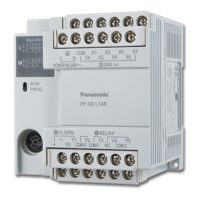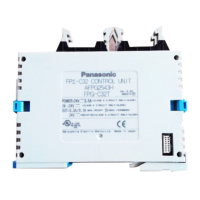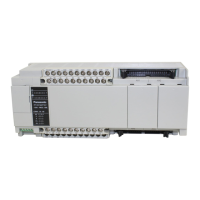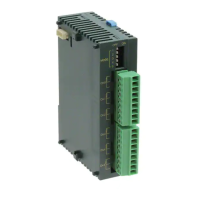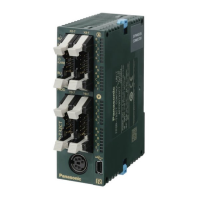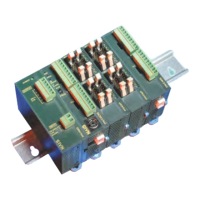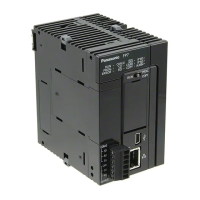Conversion instructions
689
Part III FP Instructions
F328_DINT
Floating point data -> 32-bit integer data (the largest integer not
exceeding the floating point data)
The converted integer value at output d is always less than or equal to the floating point value at
input s:
When there is a positive floating point value at the input, a positive pre-decimal
value is returned at the output.
When there is a negative floating point value at the input, the next smallest
pre-decimal value is returned at the output.
If the floating point value has only zeros after the decimal point, its pre-decimal
point value is returned.
This instruction also exists as a P instruction (for FP2/2SH, FP3/5, FP10/10SH PLC types), which
is only executed at the rising edge of the EN trigger. Select [Insert P instruction] from the
"Instructions" pane if you require a P instruction. To facilitate reuse, the instruction then appears
under "Recently used" in the pop-up menu. Press <Ctrl>+<Shift>+<v> within the programming
area to open the list of recently used elements.
PLC types
Availability of F328_DINT (see page 1324)
Variable Data type Function
s REAL source REAL number data (2 words)
d DINT, DWORD destination for storing converted data
For Relay T/C Register Constant
s DWX DWY DWR DWL DSV DEV DDT DLD DFL dec. or hex.
d - DWY DWR DWL DSV DEV DDT DLD DFL -
No. IEC address Set If
R9007 %MX0.900.7 permanently
R9008 %MX0.900.8 for an instant
the value at input s is not a REAL
number, or the converted result exceeds
the 32-bit area of output d.
R900B %MX0.900.11 for an instant the result is 0.
Description
The function converts a floating point data at input s in the range -2147483000 to 214783000 into
integer data (including +/- sign).
The result of the function is returned at output d.
Data types
Operands
Error flags
Example
In this example, the same POU header is used for all programming languages. For an example
using IL (instruction list), please refer to the online help.
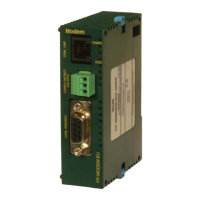
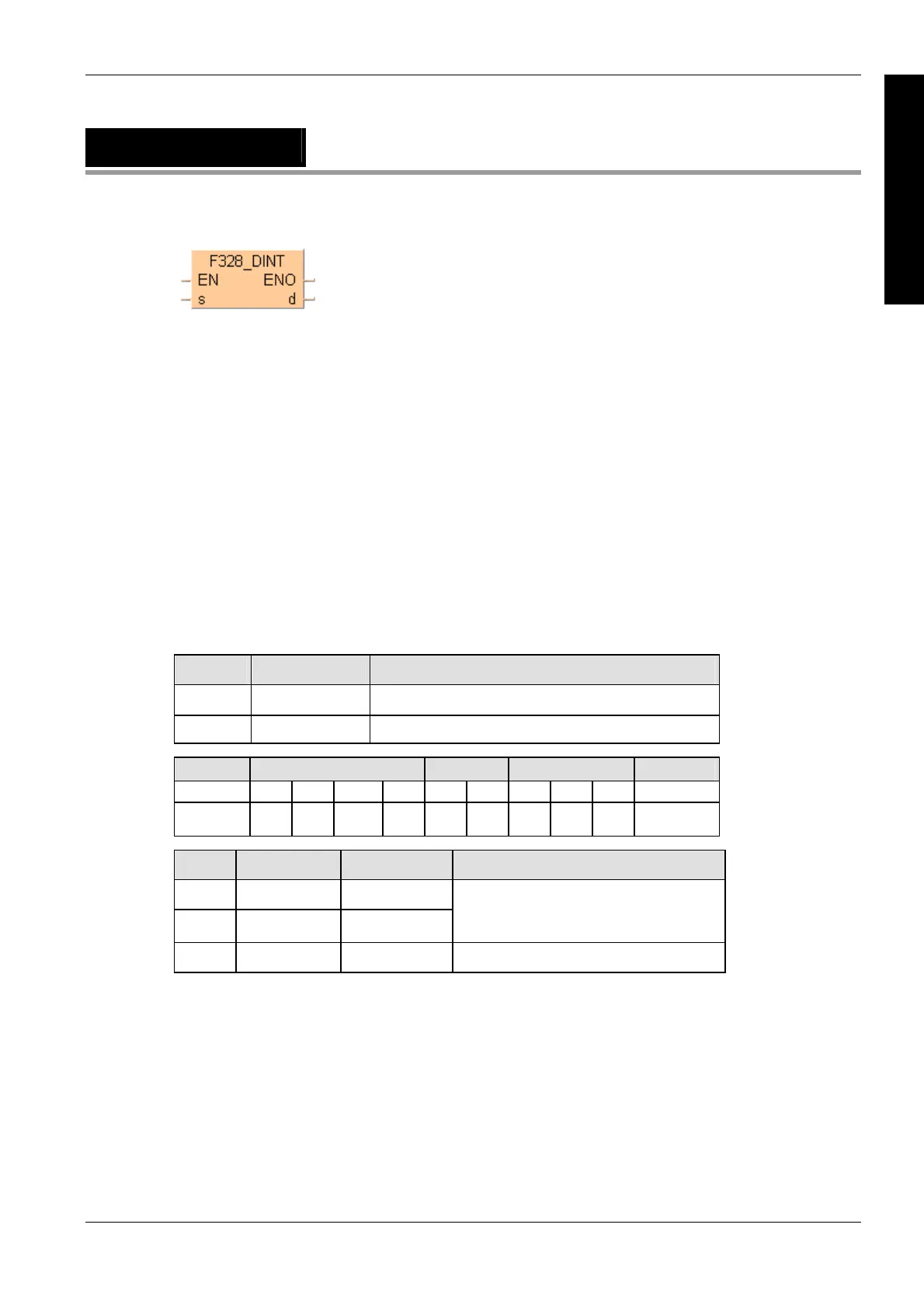